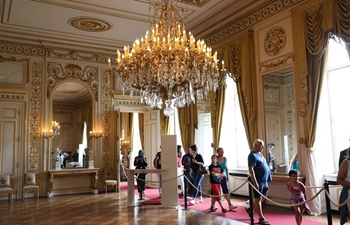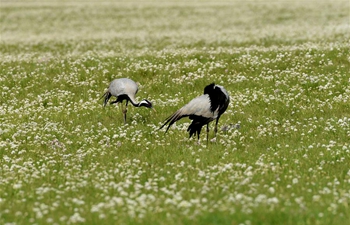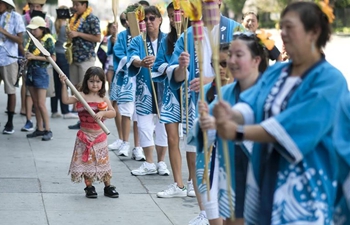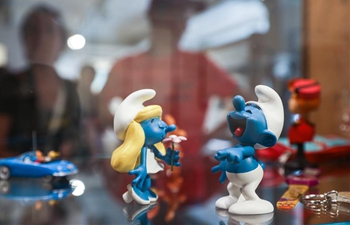CANBERRA, Aug. 23 (Xinhua) -- From Abstract Expressionism to Pop art, from steel plane to plaster bread stick, the National Gallery of Australia (NGA) put on an exhibition with 150 works to give visitors a glimpse of U.S. modern art in the 20th century.
The exhibition, namely American Masters 1940-1980, opened on Friday and runs till Nov. 11. It explores how a generation of young Americans challenged tradition and reinvented modern art, paving the way for a series of movements.
It starts with Abstract Expressionism, a movement that developed in the creative melting pot of New York after World War II.
One of the painters at that period was Jackson Pollock, whose signature large painting Blue Poles with dripped lines of blue, red and yellow paint is among the exhibits. To produce the paintings, Pollock would place an unstretched canvas on the floor before furiously throw, drip and pour paint across it. There is even a footprint visible on the top right.
Close to the painting was one from his wife Lee Krasner, the Cool White. It was finished three years after Pollock's death. The monochrome painting was made at night when she, recovering from sadness, worked through her insomnia.
The cold war period art featured abstract paintings, like the works from Frank Stella. Her work Flin Flon is composed of interlocking, semicircular arcs that form a flower-like motif reminiscent of Celtic knotwork.
The Pop art was represented by Andy Warhol's Campbell Soup I and Man Ray's Pain Peint. The former showed industrial aesthetic with various soup cans, while the latter, the French name meaning blue bread which sounds like the fire engine's horn, featured a wooden stick of bread painted blue. Ray used real bread at the beginning, but because mice would eat it, he replaced it with plaster.
More than 75 percent of the works of art in American Masters were purchased before the Gallery even opened in 1982. Some of the investment could be controversial at that time.
"This exhibition reflects Australia's courage, confidence and ambition at the time the national collection and Gallery was built," said Nick Mitzevich, NGA Director. "It is important we understand this period in art history, and its influence here in Australia."
He noted that the exhibition is a testament to the collecting vision and legacy of the early NGA, which culminated in one of the world's best and largest collections of post-war American art outside of the United States.













